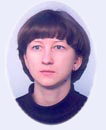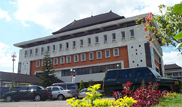Reconfigurable Systems and their Influence on Mobile and Multimedia Applications
Valery Sklyarov and Iouliia Skliarova
University of Aveiro
Department of Electronics, Telecommunications and Informatics
3810-193 Aveiro, Portugal
Phone: +351 234 370 355
Fax: +351 234 370 545
Email: {skl, iouliia}@det.ua.pt


Short abstract
With the advent of field programmable logic devices it became possible to design and implement digital systems without the need for the technological steps dealing with silicon. Tremendous progress in this area has made it possible to advance configurable microchips from programmable logic arrays - PLA (early 1970s) and further simple gate arrays, that appeared on the market in the mid-1980s, to platform field programmable gate arrays (FPGA) containing more than 10 million system gates and incorporating complex heterogeneous structures, such as PowerPC processors. Recent research results show that future programmable logic might achieve 100 billion devices per square centimeter, which permits to argue that cheap molecular-scale reconfiguration is likely to become the predominant digital technology in a decade hence. The impact of FPGAs on different development directions in computer science, electrical and computer engineering is growing continuously. Today, advanced research is being intensively performed in the areas of system-on-chip and network-on-chip supported by the extensive use of computer-aided design (CAD) systems. Traditionally, FPGA-targeted CAD systems are based on schematic and hardware description language design flows involving model-specific tools and core generators. Recently, system level specification languages (such as Handel-C and SystemC) have been developed and are now frequently used. This clearly demonstrates that the domain of reconfigurable systems design is very dynamic and many-sided. The rapid evolution of FPGA technology and relevant CAD systems requires a large number of well-prepared engineers in these areas. Hence an ongoing review of the corresponding curricula is necessary to incorporate the recent advances. Consequently the impact of reconfigurable systems on contemporary engineering education is also growing continuously.
This tutorial is intended to cover the majority of hot topics related to reconfigurable systems with a profound analysis and comparison of alternative approaches, such as hardware/software versus configware. It demonstrates advantages of reconfigurable systems in terms of technical characteristics and economic aspects and shows their significant influence on mobile computing and multimedia applications. The tutorial also includes a profound discussion of a novel methodology that has been used for teaching reconfigurable systems.
Outline
- Evolution of reconfigurable systems
- PLA and PAL;
- Gate arrays;
- Field Programmable Gate Arrays - FPGA;
- Platform FPGA.
- System-on-chip;
- Network-on-chip;
- Reconfigurable systems for mobile computing;
- Reconfigurable systems for multimedia applications.
- Generations of FPGA. Impact of FPGA on mobile computing and multimedia applications
- From gate arrays to system-on-chip;
- Configuration and reconfiguration techniques;
- FPGA architectures;
- Molecular electronics;
- Future challenges in mobile computing and multimedia.
- Relationship between software, hardware and configware (reconfigurable hardware)
- Software/hardware partitioning;
- Software/configware partitioning;
- Statically and dynamically reconfigurable accelerators for mobile and multimedia applications;
- Chipsets for application-specific microprocessors targeting at mobile and multimedia applications;
- Relationship between FPGA and ASIC (application-specific integrated circuits) targeting at mobile and multimedia applications.
- Design flow, design languages and design automation
- Design flow and design methodologies;
- Hardware description languages;
- System-level specification languages;
- Hardware/software systems for rapid prototyping;
- Design automation tools and methodologies.
- Reconfigurable systems for engineering and research
- The use of reconfigurable systems for general-purpose and application-specific computations, such as that are common for mobile and multimedia applications;
- Reconfigurable embedded systems for mobile and multimedia applications;
- Implementation of computationally intensive algorithms (example: the Boolean satisfiability);
- Alternative and competitive algorithms (example: recursive and iterative algorithms);
- Rapid prototyping and experiments;
- Concluding remarks about advantages of reconfigurable systems for mobile and multimedia applications.
- Reconfigurable systems in education
- Strong relationship between rapid evolution of reconfigurable systems and education;
- Multidisciplinary features;
- Reconfigurable systems? courses overview and analysis;
- Novel methods, tools and tutorials for teaching reconfigurable systems;
- Applying various alternative methods for evaluation of students;
- The importance of experience with design languages and commercially available automation tools;
- The importance of projects;
- The importance of distance learning and web based teaching materials and tools.
Expected background of the audience
The tutorial will be organized in such a way that does not require any specific knowledge. All architectural and technological aspects of reconfigurable systems will be demonstrated on illustrative examples, which enable the attendees to understand easily all the succeeding more advanced topics of the tutorial. We hope that the majority of engineering degrees in computer science can be considered as a sufficient required background.
Duration:
2-3 hours.
Brief biography of the presenters
Valery Sklyarov received the Engineering degree from the Technical University - UPI, Uljanovsk, Russia, in 1972; the Ph.D. degree in computer science from the Technical University - BSUIR, Minsk, Belarus, in 1978; the Doctor of Science degree in computer science from the Technical University - LETI, St. Petersburg, Russia, in 1986; and the Aggregation (Agregação) in Electrical Engineering from the University of Aveiro, Portugal, in 2001. From 1972 to 1978 he was with the Research Institute, Minsk, Belarus, where he became the Project Leader of the Design Peripheral Devices Group. From 1978 to 1994 he was with the Belorussian State University of Informatics and Radioelectronics (formerly the Minsk Radioengineering Institute), Belarus, as an Associate Professor; and since 1987 he has been a Full Professor and the Head of the Computer Science Department. Since 1994, he has been with the Department of Electronics and Telecommunications, University of Aveiro (from 2006 renamed to the Department of Electronics, Telecommunications and Informatics), Portugal, where he is currently a Full Professor of Computer Engineering. He has also been teaching and researching at Bialystok University, Poland, and Kassel University, Germany. He has authored and co-authored 17 books (and more than 250 papers) on subjects, which include digital design, computer architecture, operating systems, and programming. The research interests include specification, design and optimization of reconfigurable digital systems. The most important latest five papers are: 1) V.Sklyarov. Hierarchical Finite-State Machines and Their Use for Digital Control. IEEE Transactions on VLSI Systems, 1999, Vol. 7, No 2, pp. 222-228; 2) V.Sklyarov, Hardware/Software Modeling of FPGA-based Systems. Parallel Algorithms and Applications, Vol. 17, N? 1 (2002), pp. 19-39; 3) V. Sklyarov, Reconfigurable models of finite state machines and their implementation in FPGAs. Journal of Systems Architecture, 47, 2002, pp. 1043-1064; 4) V.Sklyarov. FPGA-based implementation of recursive algorithms. Microprocessors and Microsystems. Special Issue on FPGAs: Applications and Designs, 2004, Vol 28/5-6 pp 197-211; 5) V.Sklyarov, I.Skliarova. Teaching Reconfigurable Systems: Methods, Tools, Tutorials and Projects. IEEE Transactions on Education, May, 2005, Vol. 48, N? 2, pp. 290-300.
Iouliia Skliarova received the M.Sc. degree in Computer Engineering from the Belorussian State University of Informatics and Radioelectronics, Minsk, Republic of Belarus, in 1998; and the Ph.D. degree, in Electrical Engineering, from the University of Aveiro, Portugal, in 2004. She is currently an Assistant Professor in the Department of Electronics, Telecommunications and Informatics, University of Aveiro. She has authored and co-authored more than 40 papers on subjects, which include combinatorial optimization, digital design and computer architecture. Her research interests include reconfigurable computing, application-specific architectures, computer-aided design, and object-oriented programming. The most important latest five papers are: 1) I. Skliarova, A.B. Ferrari, "Reconfigurable Hardware SAT Solvers: A Survey of Systems", IEEE Transactions on Computers, vol. 53, issue 11, November 2004, pp. 1449-1461; 2) I. Skliarova, A.B. Ferrari, "A Software/Reconfigurable Hardware SAT Solver", IEEE Transactions on Very Large Scale Integration (VLSI) Systems, vol. 12, n. 4, April 2004, pp. 408-419; 3) I. Skliarova, A.B. Ferrari, "The Design and Implementation of a Reconfigurable Processor for Problems of Combinatorial Computation", Journal of Systems Architecture, Special Issue on Reconfigurable Systems, vol. 49, nos. 4-6, 2003, pp. 211-226; 4) V. Sklyarov, I. Skliarova, B. Pimentel, "FPGA-based implementation and comparison of recursive and iterative algorithms", Proceeding of FPL?2005, Tampere, Finland, 2005, pp. 235-240; 5) V. Sklyarov, I. Skliarova, "Teaching Reconfigurable Systems: Methods, Tools, Tutorials and Projects", IEEE Transactions on Education, May, 2005, vol. 48, N? 2, pp. 290-300.

